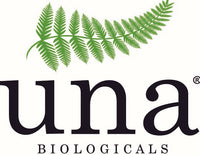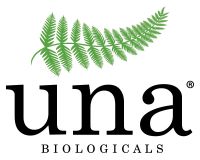
Look twice: Healing herbs disguised as weeds
As we move further into the beauty of summer, I’m finding myself constantly awed by the wild plants, flowers, and herbs I see all around me. Growing along the roadsides, popping up through the concrete sidewalks, and dispersed through the backyards of my neighborhood, plants that are commonly overlooked as troublesome “weeds” often contain many beneficial healing and nutritional properties. Here are a few common plants that you’re likely to see growing wild around town.

The humble yet amazing dandelion!
We’ll start with the obvious, ubiquitous, and WONDERFUL Dandelion: Taraxacum officianle
More than just a common weed, Dandelion is healing herb packed with nutrition and a reputation that dates back over 1000 years. In fact, dandelion was utilized for So many remedies in the 17 and 1800s that is was referred to as “the official remedy for disorders.” The very name of the plant also speaks to its widespread regard as Taraxacum, is derived from the Greek taraxos (disorder), and akos (remedy), on account of the curative action of the plant. Dandelion has been used as a tonic to cleanse blood, liver, gall bladder, and kidneys. It has also been heavily regarded as a diuretic to assist with weight loss, PMS, swollen feet and high blood pressure. The root can be combined with other herbs to assist with kidney stones. It is also used to treat boils and abscesses, promote lactation, and help replace potassium lost to excessive urination due to the diuretic effect.
All parts of the dandelion plant may be used. The Root is particularly strong and is used to make herbal decoctions (tea) and tinctures. The leafy greens are also nutritious containing substantial levels of vitamins A, C, D, and B complex as well as iron, magnesium, zinc, potassium, manganese and calcium. The leaves are delicious when added to salads or sautéed, alone or with other greens, with garlic and onion and a pinch of lemon. For an easy cleanse be sure to keep your eye for these in your yard or your local grocery store. Of course, be sure to ONLY eat dandelions that are free from chemicals and pesticides!

Super plant PLANTAIN!
Next up, let’s talk about Plantain: plantago major
This powerful healer can be found just about everywhere around town! With its flat, ribbed leaves and tall spike of flowers and seeds, plantain is easy to spot. This plant aids in soothing broken and inflamed membranes and tissue, and has anti-infective properties. Externally, the leaves can be used to heal wounds, cuts, and even provide hemorrhoid relief. A quick poultice can be made on-the-spot by mashing up the leaves and mixing them with your own spit (great for bee stings)! You can also dry and powder the leaves and add them to bentonite or green clay to create a soothing paste to dry out summer rashes, like those caused by poison ivy, or other skin irritations like eczema and rosacea.
In addition to its wound-healing properties, plantain is an antitussive expectorant, which means it helps with suppressing coughs and moving stuck phlegm in the lungs. It can be made into a tea or a syrup that helps to clear the airways and promote good lung health. Plantain is also a diuretic and has many health benefits for the urinary system. What a hard-working plant--healing many different systems and parts of human bodies! As with dandelions, the greens can be eaten and contain many vitamins.
Reference: The Herbarium Monographs. “Plantain”. http://herbarium.herbalacademyofne.com/monographs/#ID=4076. Web access 29 July 2016.

Bright and sunny calendula
Finally, let’s take a look at the beautiful Calendula: calendula officialis
It’s hard to overlook this lovely flower, which you might see in yards and gardens around town. Our neighbor behind the boutique is growing calendula in beds all along the block, and it’s such a sunny sight to see every day! The bright yellow or orange blossoms look a lot like marigolds, but note that calendula officialis is a different species than the common marigold, in which you won’t find the same medicinal properties.
The anti-inflammatory, antifungal, and antimicrobial properties of the bright Calendula flowers make this plant your friend for all things skin-related. Remove and dry the flowers to make teas, tinctures, and salves. A salve made with calendula flowers will heal wounds, burns, cuts, and scars, and will also soothe inflamed or irritated tissue. Redness and itchy skin can find relief with help from this plant.
Internally, calendula is great for the digestive system, gall bladder, and liver, helping to calm inflammations such as ulcers or other bowel diseases. Taken as a tea, it will also support the immune system, promoting circulation of energy within the body, and helping to remove toxins from the body through sweating. It is a lymphagogue, which means that it works to clean out the body’s lymph system (we see that as a reduction in swollen lymph glands). Another all-around amazing plant, calendula is a beauty to keep an eye out for!
Reference: The Herbarium Monographs. “Calendula”. http://herbarium.herbalacademyofne.com/monographs/#ID=2025. Web access 29 July 2016.
If you have any questions about these or other plants, feel free to call or stop by the Boutique. We'd love to talk to you about how to incorporate these healing herbs into your life!



